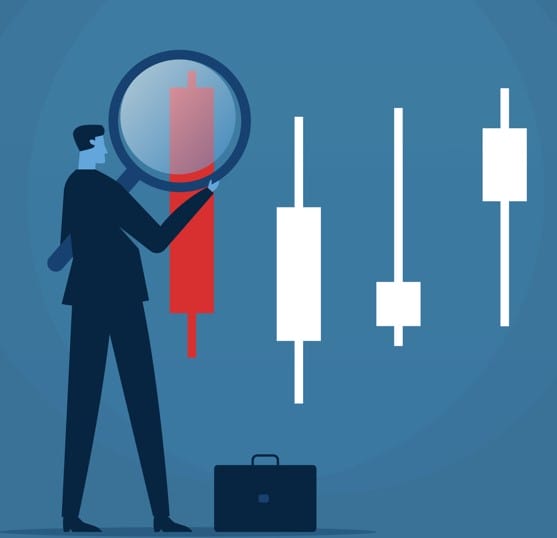Trading in financial markets offers immense opportunities for profit, but it is not without its challenges. Novice and experienced traders alike often find themselves succumbing to a variety of mistakes that can lead to significant financial losses. Recognizing these mistakes early and learning how to overcome them is essential for success in the trading world. In this comprehensive guide, we will delve into the concept of “red flags” – warning signs that indicate potential trading mistakes – and explore strategies to overcome these pitfalls. Recognizing these red flags requires a deep understanding of trading psychology, strategies, and risk management. By being attuned to these indicators, traders can take proactive steps to avoid or mitigate the potential negative consequences of their actions.
I. Understanding Trading Mistakes:

Before delving into the concept of red flags, it’s essential to establish a clear understanding of the various types of trading mistakes that traders can make. These mistakes often stem from different aspects of trading, including psychological factors, strategic errors, and lapses in risk management. This section serves as a foundational exploration of the landscape of trading mistakes.
- Psychological Factors: Trading is a highly psychological endeavor. Emotions such as fear, greed, and excitement can significantly influence trading decisions. Fear might lead to missed opportunities, while greed can push traders to take excessive risks. Understanding these psychological drivers is crucial for identifying red flags, as emotions can often cloud judgment and lead to poor decision-making.
- Strategic Errors: Strategic mistakes refer to errors made in the planning and execution of trading strategies. These can include overtrading – trading excessively due to impatience or overconfidence – or failing to conduct proper market analysis before making trading decisions. Strategic errors can stem from a lack of discipline, inadequate research, or following unsound advice.
- Risk Management Lapses: Effective risk management is the cornerstone of successful trading. Risk management mistakes involve improper position sizing, neglecting stop-loss orders, and not considering the risk-reward ratio. These mistakes can amplify losses and erode trading capital quickly. Recognizing the importance of risk management and understanding the potential pitfalls are vital for avoiding major setbacks.
II. The Concept of Red Flags:

In this section, we delve into the core concept of red flags within the context of trading. Red flags serve as early warning signs that traders can use to identify potential mistakes before they escalate into substantial losses. These flags manifest as observable behaviors, emotions, or deviations from established trading plans. Understanding and recognizing these warning signals is a critical skill for any trader aiming to improve their decision-making and overall trading outcomes.
- Early Warning Indicators: Red flags can be thought of as indicators that something might be amiss in a trader’s approach or decision-making process. These indicators are often subtle and require a degree of self-awareness and critical analysis to identify. Red flags can arise from emotional responses, impulsive actions, or inconsistencies in a trader’s strategy execution.
- Emotional Responses: Emotions play a significant role in trading, and they can either enhance or hinder decision-making. Red flags related to emotions might include feeling overwhelmed, excessively anxious, or overly confident. Recognizing these emotional shifts can help traders avoid making impulsive decisions driven by their emotional state.
- Deviations from Trading Plans: A well-defined trading plan is a roadmap for making informed decisions. Red flags can appear when a trader deviates from their plan, such as abandoning a trade strategy mid-trade or ignoring predetermined entry and exit points. These deviations can signal a lack of discipline or an emotional response that is overriding the trader’s rational judgment.
- Impulsive Decisions: Impulsivity can lead to unplanned and often irrational trading actions. Red flags in this category might include entering trades without proper analysis, increasing position sizes without justification, or making sudden changes in trading strategies without sufficient reason. These impulsive actions can have detrimental effects on a trader’s overall performance.
III. Psychological Pitfalls and Red Flags:

This section of the guide focuses on the psychological aspects of trading and the common pitfalls that traders can fall into due to emotional influences. It explores how emotional responses can lead to mistakes and outlines red flags that can help traders identify and manage these pitfalls.
- Emotional Trading: Emotions such as fear and greed can significantly impact trading decisions. Fear might lead traders to hesitate or avoid potentially profitable trades, while greed can push them into high-risk positions in pursuit of quick gains. These emotional responses can distort rational decision-making and lead to regrettable outcomes.Red Flags: Red flags in emotional trading include instances of revenge trading, where a trader attempts to recover losses quickly, often leading to impulsive and irrational decisions. Another red flag is chasing losses, where traders increase their risk exposure in an attempt to recover lost capital.
- Lack of Discipline: Discipline is essential in trading to adhere to well-defined strategies and trading plans. A lack of discipline can result in inconsistent decision-making and an inability to stick to pre-established rules.Red Flags: Deviating from a trading plan mid-trade is a red flag that indicates a lack of discipline. Similarly, neglecting to use stop-loss orders as per the trading plan can expose a trader to unnecessary risks.
Strategies to Overcome Psychological Pitfalls:
- Emotion Management: To overcome emotional trading, traders can implement strategies like keeping a trading journal. Documenting trades, emotions, and the rationale behind decisions can provide insights into emotional triggers and help maintain objectivity.
- Discipline Reinforcement: To address a lack of discipline, traders can set clear entry and exit points for trades before execution. Establishing these rules in advance can prevent impulsive decisions during the heat of the moment.
IV. Strategic Mistakes and Red Flags:

This section of the guide explores strategic errors that traders commonly make, which can have a significant impact on their trading outcomes. It delves into these mistakes and outlines red flags that traders can use to identify and rectify their strategies for more effective trading.
- Overtrading: Overtrading refers to the practice of trading too frequently or with excessively large positions. It often stems from impatience, overconfidence, or a desire to be constantly active in the markets.Red Flags: Frequent and impulsive trading, especially without valid reasons, can indicate overtrading. Ignoring established trading rules and executing trades without proper analysis are also red flags.
- Ignoring Market Analysis: Successful trading relies on thorough market analysis, which involves both fundamental and technical assessments of the market conditions. Ignoring this analysis can result in poor trading decisions.Red Flags: Trading without conducting comprehensive analysis is a red flag. Entering trades solely based on a “hunch” or without considering market trends and indicators can lead to suboptimal results.
Strategies to Overcome Strategic Mistakes:
- Setting Trade Limits: To curb overtrading, traders can set a limit on the number of trades they will execute within a specific time frame. This can help prevent impulsive trading and encourage more thoughtful decision-making.
- Research Routine: To avoid ignoring market analysis, traders should establish a consistent routine for conducting research before entering trades. This includes studying fundamental factors, monitoring news, and analyzing technical indicators.
V. Risk Management Errors and Red Flags:

This section of the guide centers around the critical aspect of risk management in trading. It delves into the mistakes traders often make in managing their risk exposure and outlines red flags that serve as warning signs to help traders avoid these pitfalls.
- Improper Position Sizing: Position sizing refers to determining the amount of capital to allocate to a specific trade. Improper position sizing can lead to overexposure to risk or missed opportunities for profit.Red Flags: Risking too much capital on a single trade is a red flag indicating improper position sizing. Entering trades with inconsistent position sizes without a clear rationale can also be a warning sign.
- Neglecting Risk-Reward Ratio: The risk-reward ratio is a fundamental concept in trading that compares the potential loss of a trade to the potential gain. Neglecting to consider this ratio can lead to unfavorable risk-to-reward scenarios.Red Flags: Entering trades with skewed risk-reward ratios, where potential losses outweigh potential gains, is a red flag. Ignoring the risk-reward aspect in trade analysis can also be indicative of this mistake.
Strategies to Overcome Risk Management Errors:
- Percentage Risk Model: Traders can adopt the percentage risk model, where they determine the maximum percentage of their trading capital they are willing to risk on a single trade. This approach ensures consistent risk management across different trades.
- Setting Minimum Risk-Reward Ratios: To address neglecting risk-reward ratios, traders can establish a minimum acceptable ratio for each trade. This helps filter out trades that don’t offer a favorable risk-to-reward balance.
VI. Adapting to Changing Market Conditions:

This section of the guide focuses on the dynamic nature of financial markets and the importance of adapting trading strategies to changing conditions. It explores the challenges posed by evolving market dynamics and offers strategies for traders to navigate these shifts effectively.
- Staying Flexible: Financial markets are subject to constant changes driven by economic events, geopolitical developments, and technological advancements. Traders need to remain adaptable and flexible to respond to these changes.Red Flags: Sticking rigidly to a single trading strategy despite changing market conditions can be a red flag. Failing to adjust trading approaches when market dynamics shift can hinder performance.
- Continuous Learning: The trading landscape is characterized by ongoing advancements in techniques, tools, and market understanding. Traders who fail to keep learning risk becoming outdated and unable to capitalize on new opportunities.Red Flags: Refusing to learn from mistakes or dismissing the importance of staying updated can be red flags. Complacency in trading education can hinder growth and performance.
Strategies for Adapting to Changing Market Conditions:
- Monitoring Market Trends: Traders should regularly assess market trends, economic indicators, and news that could impact their chosen assets. This information informs adjustments to trading strategies as conditions evolve.
- Continuous Education: Engaging in continuous learning is crucial. Traders can attend webinars, seminars, and workshops, and read market-related literature to stay informed about new strategies and developments.
Conclusion
Trading mistakes are an inherent part of the journey, but recognizing and addressing red flags can significantly mitigate their impact. Traders who develop self-awareness, discipline, and a comprehensive understanding of market dynamics are better equipped to navigate the complexities of trading. By acknowledging the psychological, strategic, and risk management pitfalls discussed in this guide, traders can embark on a path of continuous improvement and increased profitability in the world of trading. Trading can be isolating, and the challenges faced are often shared experiences among traders. By engaging in forums, online groups, or local meetups, traders can exchange insights, share experiences, and learn from one another’s successes and setbacks. This sense of community not only provides emotional support but also offers diverse perspectives that can contribute to better decision-making and a more well-rounded trading approach. As traders collectively identify and address red flags, they contribute to a culture of learning and growth that benefits everyone involved.
Don’t trade all the time, trade forex only at the confirmed trade setups.
Get more confirmed trade setups here: forexgdp.com/buy/
